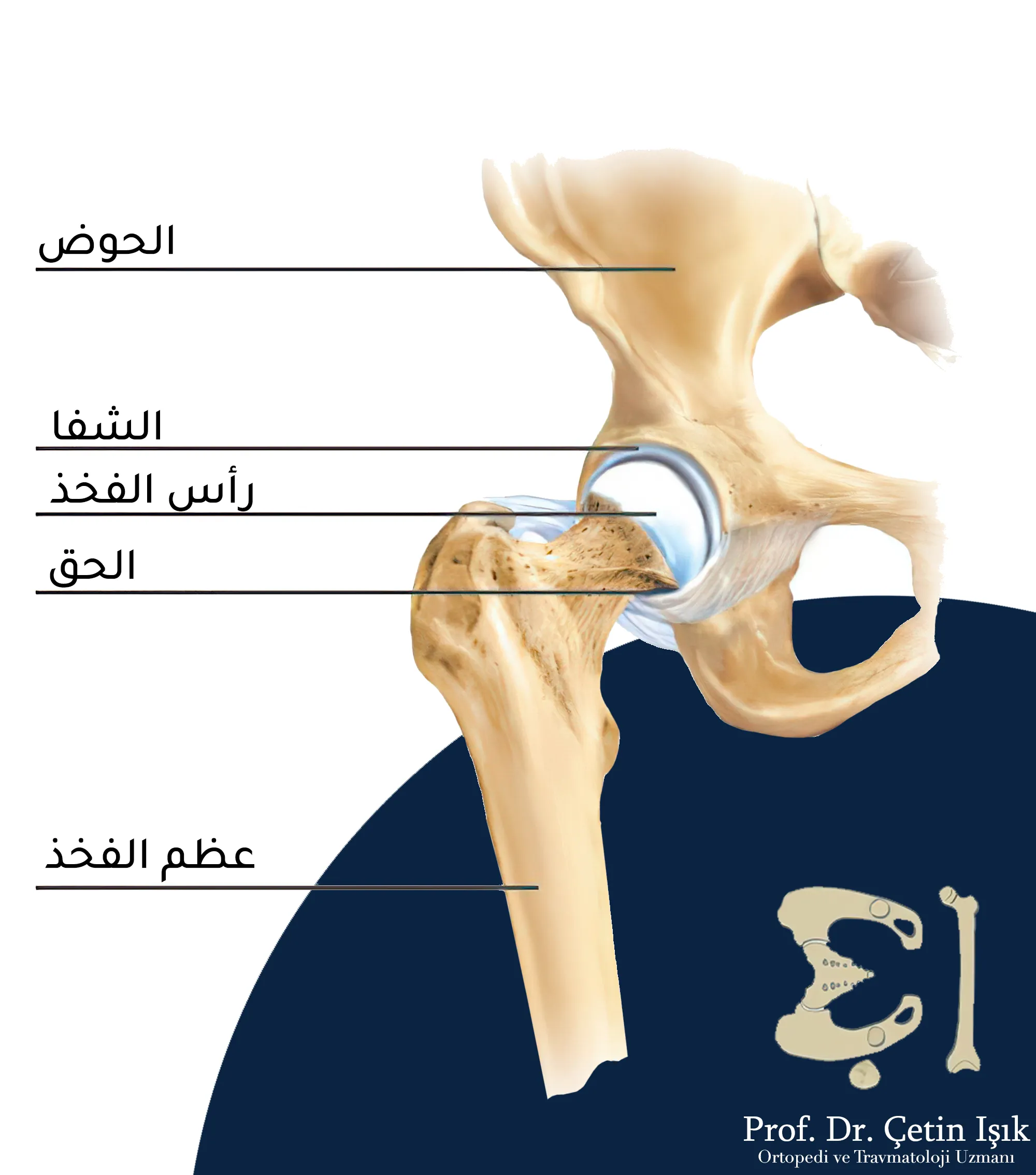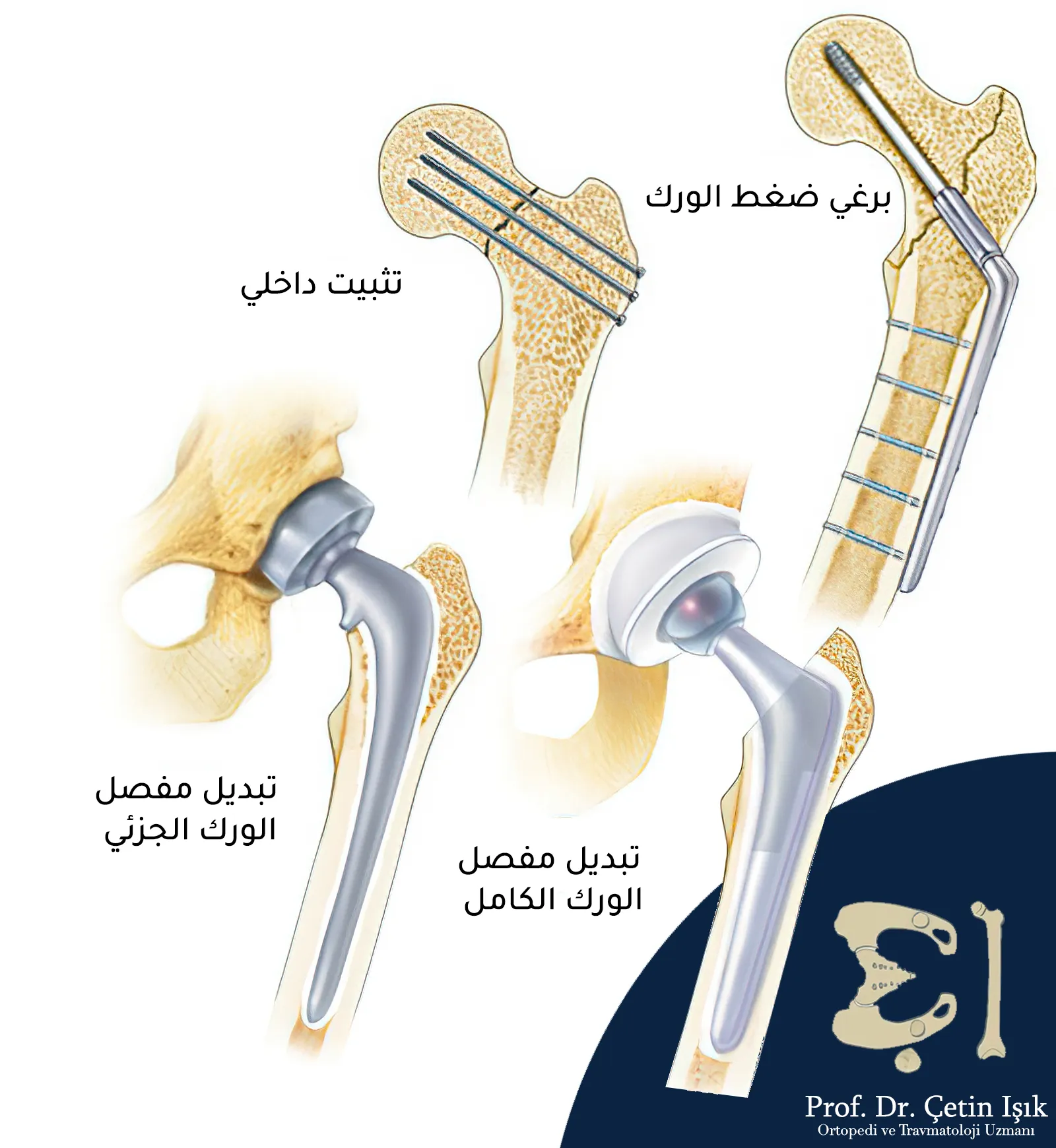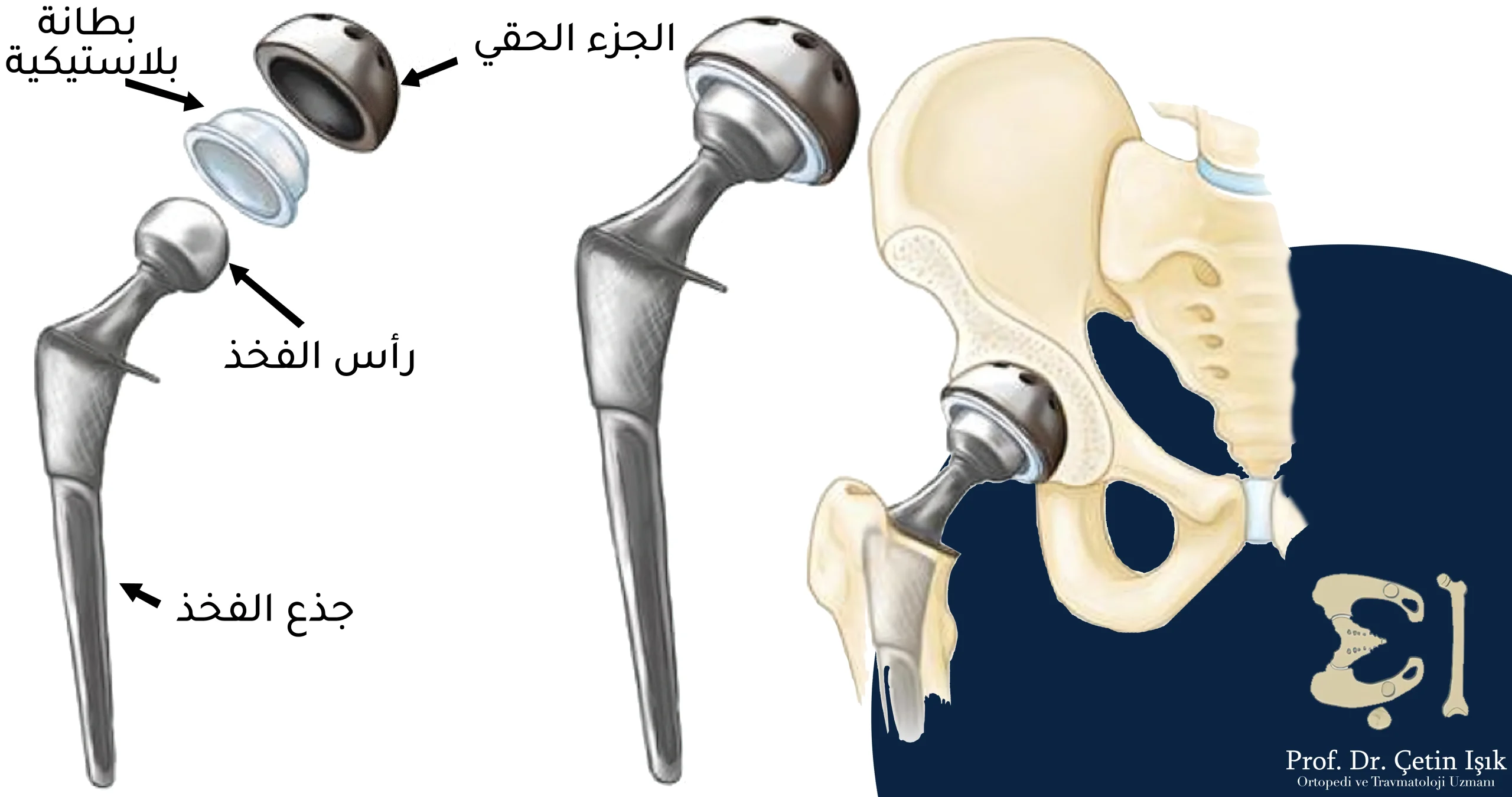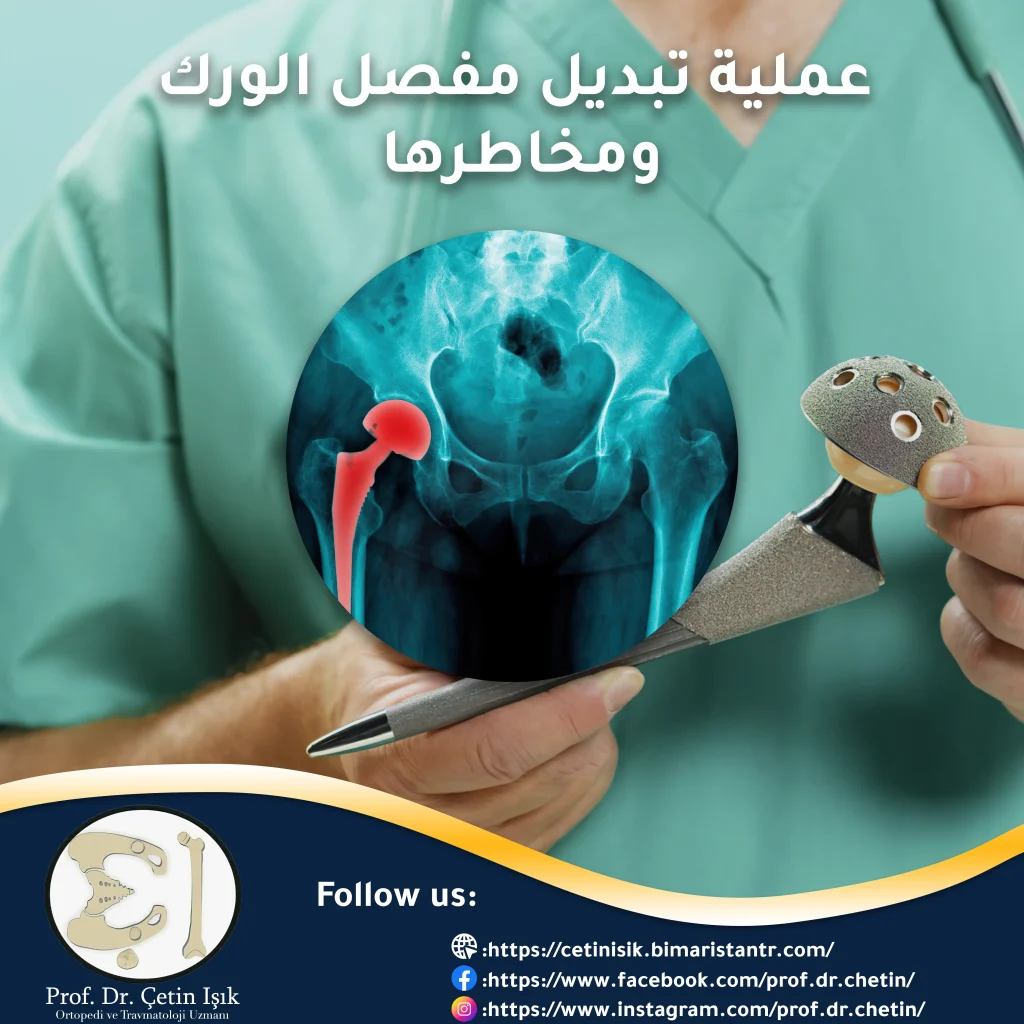Hip replacement in Turkey is a surgical procedure in which damaged parts of the pelvis and femur are replaced with artificial parts in order to relieve hip pain and stiffness and improve the patient's mobility.
An operation can be performed Hip joint replacement To treat some conditions such as hip fractures and improper growth of the hip joint. However, most hip replacement surgeries are performed in elderly people aged 60-80 years.
Hip replacement surgery, as in knee joint replacement, aims to relieve pain resulting from a damaged hip joint, improve joint function, and increase mobility. Follow with us to learn about the hip replacement procedure, the method of its procedure, and its risks.
An overview of hip replacement in Türkiye
The hip joint is a ball-socket joint. The femoral head forms the ball, while the cavity is part of the pelvis and is known as the acetabular cavity. This type of joint allows wide movement of the joint in many directions through the movement of the ball within the acetabular cavity. There are also structures that support and strengthen the joint, which are the muscles, ligaments, and cartilage that cover the ball and the acetabular cavity to help it slide smoothly.

Hip replacement surgery is performed Hip replacement To replace the damaged parts of the hip joint that cause problems for the patient with new parts made of metal, plastic or ceramic. can be divided Hip joint replacement operations In Türkiye, there are three main types: total and partial hip replacement and hip resurfacing:
Total hip replacement (total)
Total hip replacement is the most common procedure, in which damaged parts of the hip joint are replaced with artificial implants (i.e. the femoral head and acetabular cavity are replaced together).
In a total replacement, the acetabulum is replaced with a durable plastic cup (which may have a titanium metal sleeve), and the head of the femur is replaced with a metal or ceramic ball. The new ball is attached to a metal stem that is inserted into the top of the femur.
Partial hip replacement
A partial hip replacement involves replacing the damaged part of the joint (for example, the affected femoral head) and keeping the healthy part.
Hemi-hip replacement surgery is usually performed on elderly people who have had...Fracture of the femoral neck In the event of a joint injuryBone tumors.

Hip resurfacing
In hip resurfacing, the femoral head is not removed like in a total hip replacement, but rather trimmed (peeled) and covered with a smooth metal cap. Peeling the head of the femur and the acetabular cavity is most commonly performed in younger, active patients.

Reasons for hip replacement
is made Hip joint replacement When severe pain, inflammation and damage to the hip joint occurs due to conditions such as:
- Hip arthritis; It is the most common cause of hip replacement, as in : Degenerative arthritis andRheumatoid Arthritis andpsoriatic arthritis;
- Osteonecrosis (avascular necrosis); The femoral head dies due to the interruption of its blood supply
- harm; Like a broken hip
- Tumor in the hip joint
- Hip joint deformities
Preparing for a hip replacement surgery
Preparation for hip replacement surgery is carried out by conducting some tests to ensure the patient's health, in addition to modifying the lifestyle to reduce the risk of complications after the operation.
Routine examinations
Several tests are performed before hip replacement, such as a simple hip
Other radiological examinations such as MRI and CT-Scan may be required to obtain additional information about the patient's joint before starting the operation.
Tips before the operation
The surgeon may recommend some exercises that should be done in the last weeks before surgery to strengthen the muscles and speed up the healing process.
It is necessary to quit smoking to reduce the possibility of complications during and after surgery.
The doctor may ask to stop some medications the patient is taking, such as blood thinners and nonsteroidal anti-inflammatory drugs (NSAIDs) such as ibuprofen.
Anesthesia
is made Hip joint surgery It is usually performed under general anesthesia (the patient is asleep) or lumbar anesthesia (the patient is awake but cannot feel what is beneath his or her loin), and may be performed under epidural (similar to lumbar) anesthesia.
How to perform hip replacement surgery in Istanbul
is made Hip replacement surgeries for the elderly According to the following steps:
- The surgeon makes an incision on the side of the thigh and then removes the damaged bone and cartilage from the hip joint.
- The surgeon removes the head of the femur (the ball) and drills the acetabulum so that the artificial femoral head fits.
- An artificial part is placed in place of the acetabular cavity in the pelvis and an inclined metal column (stem) with a smooth ball at its upper end is placed in the upper part of the thigh to fit the acetabular cavity.
The hip replacement surgery usually takes approximately one to two hours, depending on the type of surgery that will be performed on the patient.
In Turkey, we perform minimally invasive techniques to avoid the muscles and tendons around the joint. We make one or two small incisions and use special tools to replace the hip joint.
Minimally invasive hip replacement is as safe and effective as traditional surgery, and has less post-operative pain.
After hip replacement surgery
The patient remains in the hospital for approximately 3-5 days after surgery, depending on the patient's recovery and the type of surgical procedure performed.
The length of the recovery period varies from one patient to another depending on several factors such as the patient's health, but on average the complete recovery period takes approximately 2-8 weeks.
Usually the patient does not leave the hospital until he can walk a few steps in the room. Physical therapy exercises are performed daily after the hip replacement surgery, so that the patient can walk and return to his normal life within approximately 6 weeks.

Cost of hip replacement surgery
The method and type of operation differ from one patient to another based on his age and health condition, so it is not possible to determine an accurate price for the operation. In general, the cost of hip replacement surgery starts at approximately $8,000.
We place the patient's health and future as our top priority, so we use the best types of artificial joints available and perform the operation with the help of an elite group of doctors specializing in joint surgery and in the best Turkish hospitals.
Contact us for a free consultation and to know the exact cost of the tub joint installation process.
Complications of hip replacement surgery
Although these complications are rare, they cannot be ignored, and the patient must be informed of all the risks that the surgical procedure carries, as complications may include the following:
- Blood clots: This is the most common complication. Its danger lies in the possibility of the clots reaching the lung, leading to a pulmonary embolism. This can be prevented by taking blood thinners, wearing compression stockings, and moving the leg as soon as possible after surgery.
- Joint infection: This is the complication that the doctor fears most. It is usually treated with antibiotics, but in rare cases the doctor may have to wash the joint or replace it again.
- Metal allergy: It is an immune reaction to the metal in the artificial joint.
- Joint looseness: This is the occurrence of pain and the patient’s feeling that the joint is unstable. Looseness can occur at any time, but usually occurs 10-15 years after surgery.
- Hip dislocation: This is when the hip joint comes out of its socket. Dislocation may occur in the first few months after surgery while the hip is still recovering. Usually another surgery is performed to return the joint to its place.
- Leg length difference: The leg that was operated on may be shorter or longer than the other leg.
- Periarticular bone fractures: These are often caused by loosening of the metal stem in the femur.
Tips after hip replacement surgery
The patient must ask his doctor about the activities that he can perform after the hip joint procedure and follow his instructions to ensure that the new artificial joint is moved in a proper manner. Common tips after hip replacement include:
- Avoid bending your hip more than 90 degrees (right angle) when doing any activity.
- Avoid twisting the hip.
- Do not put pressure on the wound in the early healing stages (avoid lying on the operated side).
- Avoid any activity that makes you feel uncomfortable.
- Do not sit on low chairs.
- When you want to turn around, take small steps.
Hip replacement is a surgical procedure in which the hip joint is replaced with a new artificial joint. It may seem simple, but this requires many years of experience in order to achieve the best possible results and to be a reason for improving the patient’s life and restoring vitality and activity.
Sources:
- NHS
- University of Florida Health
- National Institute of Arthritis and Musculoskeletal and Skin Diseases
- Sydney Local Health District
Common questions
The success rate of hip replacement surgery is more than 95%, the success rate after 10 years is 90 - 95%, and 80 - 85% after 20 years.
The patient can usually begin walking after hip replacement on the same day of surgery or the next day, and most patients can resume daily routine activities within 6 weeks of the recovery period.
Hip joint surgery is not considered a serious operation like other major surgeries, but this does not negate the occurrence of some complications that can be managed.
The lifespan of the artificial hip joint varies depending on several factors, including the patient’s activity, weight, and health, but on average the lifespan of the joint is 10-15 years.
The hip replacement surgery takes approximately 1-2 hours.
The cost of hip replacement surgery starts from $8,000.
Each patient's recovery varies based on several personal factors. However, most people experience pain for about two to four weeks after hip replacement surgery.



